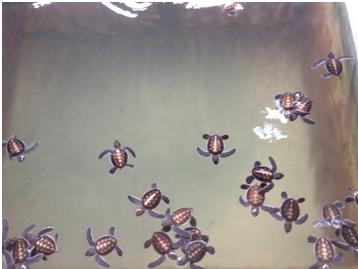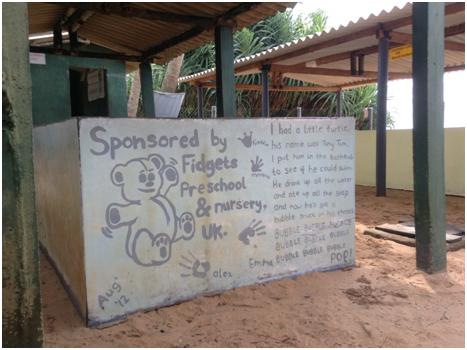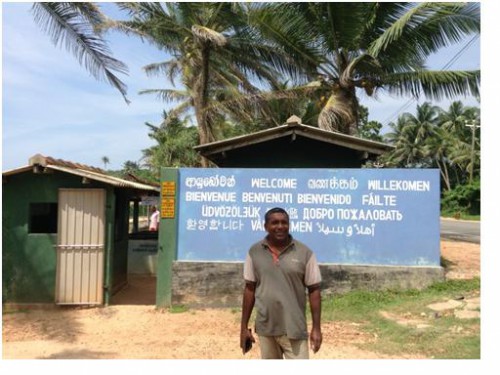23rd December 2014 Colombo, Sri Lanka
The Underwater Wave
Our seventh blog looks at the impact of the tsunami on marine life, and particularly the turtles for which Sri Lanka is famous. Dudley Perera founded the Kosgoda Sea Turtle Conservation Project when he left school in 1988. He writes about recovering from the tsunami and the continuing threats to turtles.
Situated on Sri Lanka’s south-west coast, Kosgoda is an ideal site for turtle hatcheries. It hosts five of the seven species of sea turtles: the Loggerhead, Hawksbill, Olive Ridley, Leatherback and Green turtles, all of which are critically endangered or endangered species.
Marine pollution, fishing, and habitat destruction are all serious threats to turtles, but the greatest threat to those in Sri Lanka is the demand for turtle soup and the black-market trade in turtle eggs and shells. We counter these threats by raising awareness in the community and buying eggs from fishermen to bring them to the safety of the hatchery. The project released 10,000 turtles into the sea last year.

When the tsunami struck, Kosgoda was overwhelmed by a six metre high wave that surged over a mile inland, destroying nesting beaches along with thousands of turtle eggs. Turtles may migrate over great distances but will only mate in their own waters, and females will return back to their birth beach to lay their own eggs. The wave also had a devastating impact on the coral reef acting as a natural breakwater, which had a trickledown effect on the sea life that relied on it.

In the days following the tsunami, I remember frantically reuniting with my family only to find our conservation site in rubble and injured turtles all along the coast. Local fisherman who had lost their fishing boats and equipment turned to turtle egg poaching in desperate need of cash. A quick rebuild to protect the remaining turtles and grounds before the high nesting season began was paramount.
Through hard work, we got our site back on its feet by the end of January and open to the public in March 2005. We had a lot of generous donations, including from some schools in the UK, who funded the rebuild of two of the turtle tanks. Luckily, the tsunami did not wipe out the structure of the volunteer house and through sites such as Great Project and I-to-I, predominantly British volunteers have come out in many numbers since the tsunami to help out with the running of the site.

There is a lot more work to be done: more tanks, bigger tanks, patrol squads and I hope also to set up an educational programme in the area. Of course turtles make for good tourism, but I believe that that has to come second to conservation.
Ten years on from the tsunami, the beach may be back almost as it was before, but the threat to the turtles is perhaps even greater than it was before. For as long as we have poaching, pollution and habitat destruction, Sri Lanka’s turtles will remain endangered.

Read other blogs in the series: